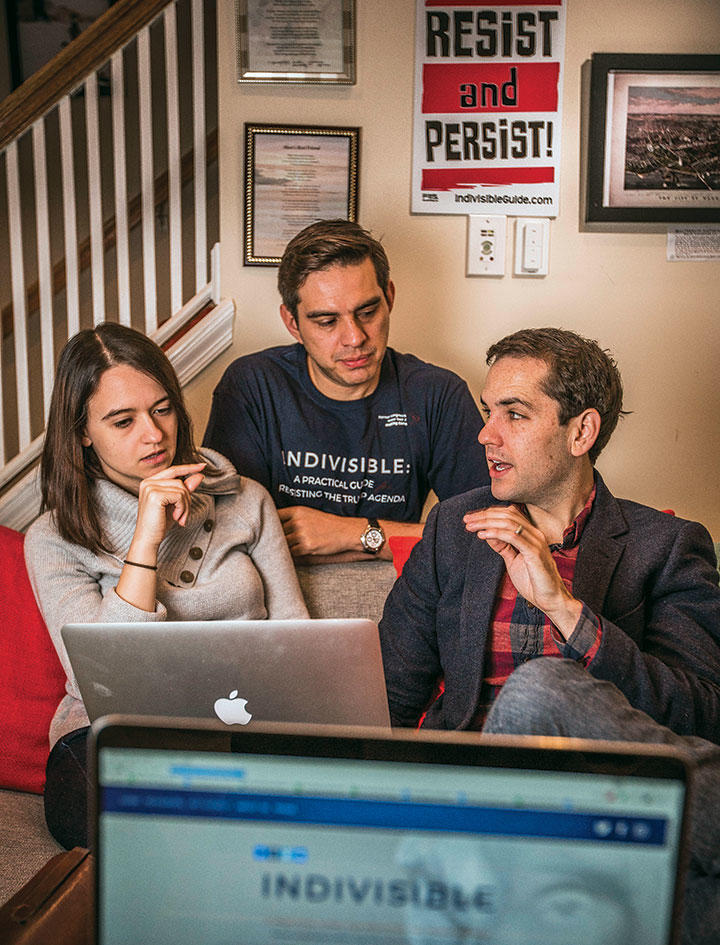Ezra Levin *13 and Angel Padilla *13: An ‘Indivisible’ Force
Former congressional staffers take a page from the Tea Party playbook
Across the country this winter, jittery liberals have been putting aside their copies of The New Yorker and The Atlantic for a 23-page online booklet that began as a Google document. “Indivisible: A Practical Guide for Resisting the Trump Agenda” — a do-it-yourself kit for how to build a Tea Party of the left — is the product of more than two dozen writers, most prominently Ezra Levin *13, Angel Padilla *13, and Levin’s wife, Leah Greenberg.
The three are former Democratic congressional staffers who witnessed firsthand the grassroots conservative backlash to President Barack Obama’s legislative agenda in 2009 and 2010. That movement led to the Tea Party, which swung both houses of Congress to Republican control and bedeviled Obama for the rest of his time in office. If imitation is the sincerest form of flattery, the right wing should feel flattered indeed.
“Politics is the art of the possible,” Levin, Padilla, and Greenberg wrote in a January op-ed for The New York Times, “and the Tea Party changed what was possible.” With that in mind, they insist that much more is now possible for the left than those dispirited by Hillary Clinton’s defeat may realize.
“Politics is the art of the possible, and the Tea Party changed what was possible.”
— Ezra Levin *13, Angel Padilla *13, and Leah Greenberg
The project started as a Google doc shared among a few dozen friends and colleagues desperate for a plan of action. So many people weighed in that their page repeatedly crashed, leading them to turn it into a website and a downloadable pamphlet which, as of mid-March, had been viewed nearly 18 million times. They have also added a directory of more than 5,800 community groups, including at least two in every congressional district.
“Indivisible” offers step-by-step instructions for how to form or locate citizen-advocacy groups and the most effective ways to pressure members of Congress: making phone calls, attending town halls and other public events, demanding meetings, and even organizing sit-ins. Though perhaps the best known, “Indivisible” is one of a host of recent guides for progressive engagement, putting the power of the internet and social media in the service of political activism.
The key is unrelenting citizen pressure, Levin says. All members, even those in the safest districts, are motivated by the desire to be re-elected; angry constituents put that at risk. In swing districts, calls and protests might persuade a representative to oppose President Donald Trump, but even solid liberals can be stiffened in their opposition and staunch conservatives cowed into staying off the front lines. Levin cites the number of Republicans who either spoke against Trump’s Jan. 28 executive order on immigration, or muted their support of it, as evidence that pressure works.
“None of this is rocket science,” Levin adds. “This is Civics 101.”












No responses yet